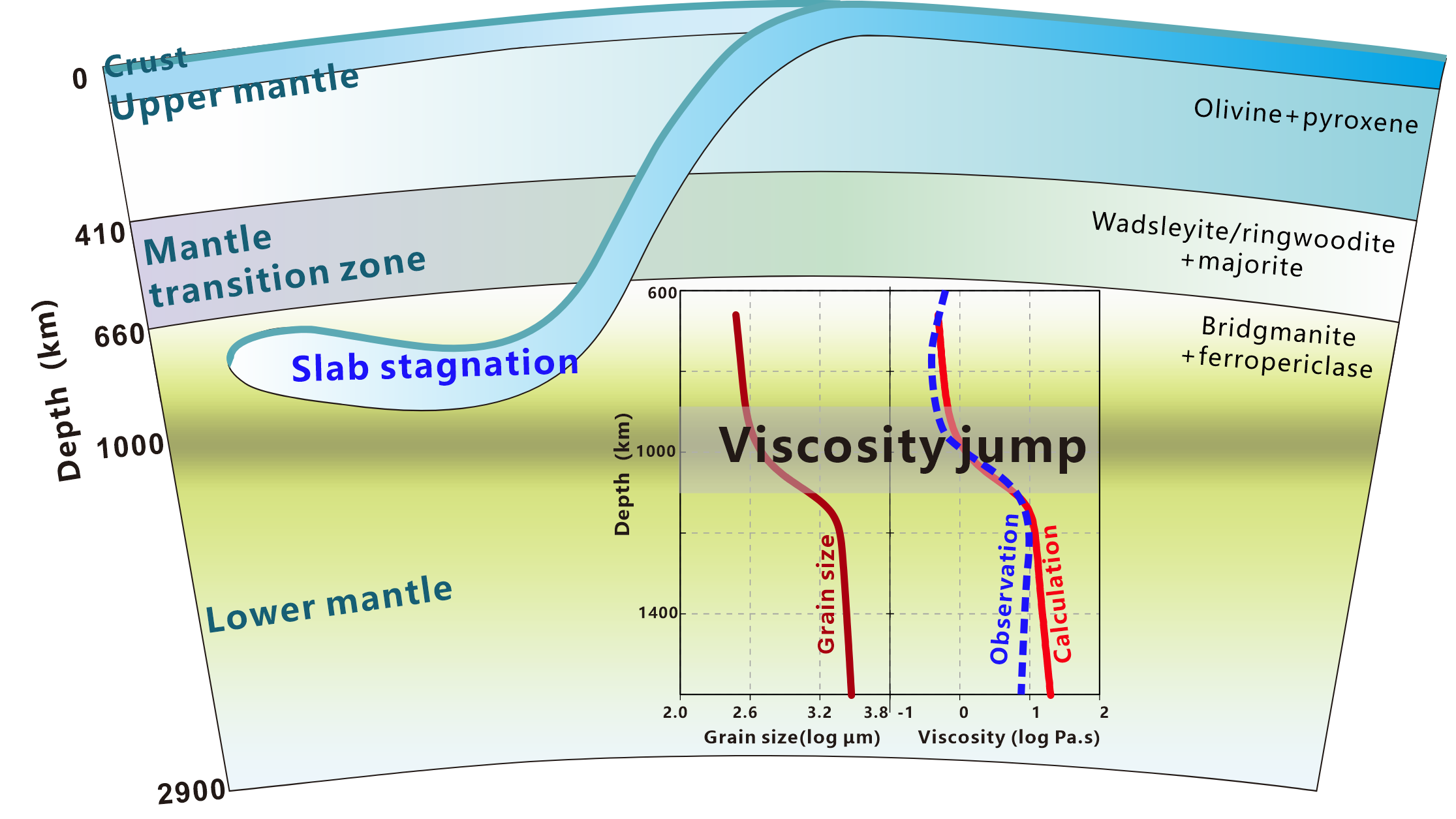
The mid-mantle viscosity jump explained by bridgmanite grain size variation
Hongzhan Fei, Maxim D. Ballmer, Ulrich Faul, Nicolas Walte, Weiwei Cao, Tomoo Katsura
Variation in bridgmanite grain size accounts for the mid-mantle viscosity jump
Nature 2023, https://doi.org/10.1038/s41586-023-06215-0
Geophysical observations indicate a viscosity jump by 1 – 2 orders of magnitude in the Earth’s mid-mantle at about 800 – 1200 km depth (Rudolph et al., 2015). This mid-mantle viscosity jump is critical for understanding mantle evolution because it affects a number of geodynamic processes. For example, it causes the flattening and stagnation of slabs in the shallow part of the lower mantle, accelerates and narrows the upwelling mantle plumes, and inhibits mantle mixing. However, since phase transitions of major mantle minerals do not occur at this depth, the origin of the viscosity jump remains unknown.
Because diffusion creep is an important deformation mechanism in the lower mantle and viscosity is strongly grain-size dependent in the diffusion-creep regime, we investigated the grain growth rate of bridgmanite under mid-mantle conditions by multi-anvil high pressure experiments and evaluated the grain size variation in the lower mantle. Our experimental results indicate that the grain growth of bridgmanite is inhibited by increasing ferropericlase proportion. Considering the variation of ferropericlase proportion with depth in the lower mantle reported previously (Ballmer et al., 2017), bridgmanite in the deep lower mantle should have a grain size more than one order of magnitude larger than the shallow regions, which is sufficient to explain the mid-mantle viscosity jump.

Viscosity jump in the lower mantle explained by bridgmanite grain size variation
Fei H., Ballmer M., Faul U., Walte N., Cao W., Katsura T., Variation in bridgmanite grain size accounts for the mid-mantle viscosity jump. Nature (2023). https://doi.org/10.1038/s41586-023-06215-0
Rudolph M., Lekic V., Lithgow-Bertelloni, C., Viscosity jump in Earth’s mid-mantle. Science 350, 1349-1352 (2015). https://www.science.org/doi/10.1126/science.aad1929
Ballmer M., Houser C., Hernlund J., Wentzcovitch R., Persistence of strong silica-enriched domains in the Earth’s lower mantle Nature Geoscience 10, 236-240 (2017). https://www.nature.com/articles/ngeo2898
Tel: +49-(0) 921 55 3700 / 3766, Fax: +49-(0) 921 55 3769, E-mail: bayerisches.geoinstitut(at)uni-bayreuth.de